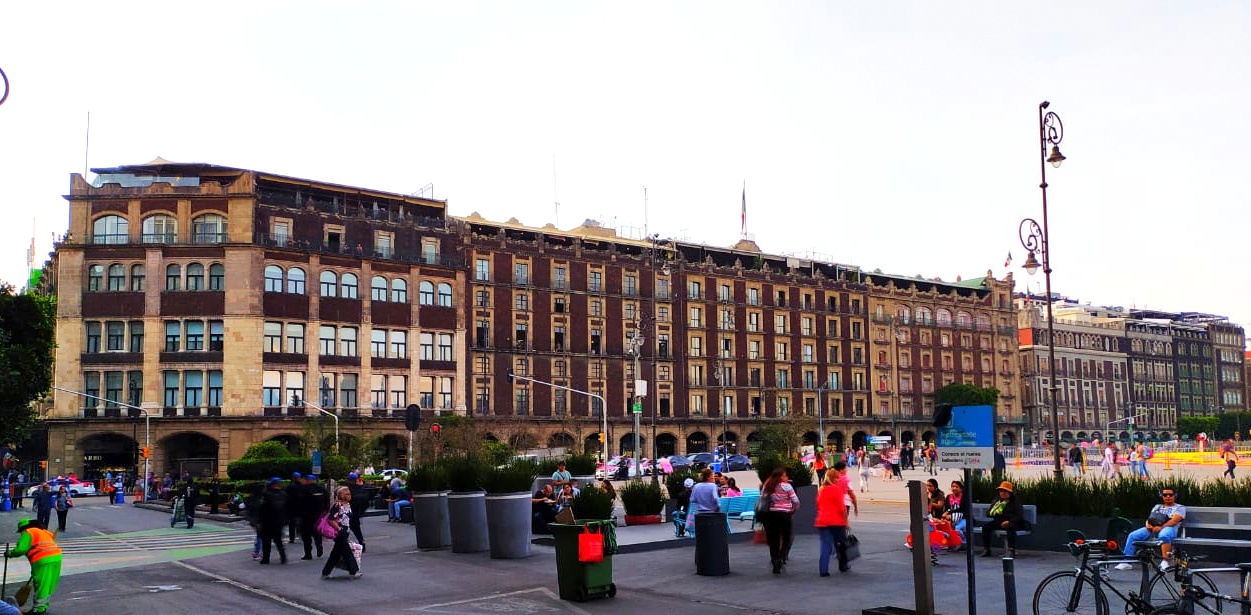
The southwest side of the Zócalo, the Portal de los Mercaderes, while its name is not well known, is a very good introduction to one of Mexico City’s historically defining conflicts. Since Tlatelolca people left ancient Tenochtitlán to form their own massive tianguis on the north of the island, the city has been in a near continual struggle to keep streets, at least mostly, free of vendors.
The Portal de los Mercaders, literally, the Merchants Portal, was begun 1527 by one Melchor Dávila. Fabric shops were already open, operated by one Gonzalo Ruiz, by 1532. Señor Ruiz no doubt witnessed this continuous struggle to keep the Zócalo from sinking into a continual morass of vendors buying, selling, haggling, and vocally announcing their wares. The portals, the covered walkway along the square’s western edge, were intended right from the beginning, to provide more space for vendors.
Much of the original land here had been granted to a Don Rodrigo de Albornoz, the Count of Santiago, secretary of Emperor Charles V, and the first accountant of New Spain.
By 1524, the city council had approved an ordinance stating that owners of properties facing the square could, and should, build covered walkways in front of their establishments to rent the space to merchants. The ordinance is thought to have also been an early attempt to manage flooding and subsidence problems.
The covered walkways visible now, only on the square’s south west side once ran unbroken to the cathedral and beyond. These were originally completed in 1529. They were then replaced in the 17th century in time for primarily cloth merchants to expand to dominate nearly the length of the structure.
The 18th century saw a more diverse variety of vendors selling nearly everything. The name, the Portal de los Mercaderes, came into common usage only after independence in the 19th century. Finally, by only the middle of the 19th century, the covered walkway was divided, north and south, with the opening of Calle Plateros, now Calle Madero. The northern portion was eventually lost to history.
Here, it should be understood that the city always owned the land beneath the arches.
Disputes over maintenance, back-rent, and simple management and coordination were always going to rage. And these conflicts extended across the Zócalo, and even today explain much of the city’s (and country’s) system of Public Markets, street tianguis, and other fixed marketplaces, especially in the Centro Histórico.
The buildings on this southwest side of the Zócalo were built or rebuilt in the 19th century. Their facades were then redone in the 1950s with the characteristic red volcanic tezontle and gray canterra stone, and all done in a neo-colonial style.The southwest side of the Zócalo, the Portal de los Mercaderes, while its name is not well known, is a very good introduction to one of Mexico City’s historically defining conflicts. Since Tlatelolca people left ancient Tenochtitlán to form their own massive tianguis on the north of the island, the city has been in a near continual struggle to keep streets, at least mostly, free of vendors.
The Portal de los Mercaders, literally, the Merchants Portal, was begun 1527 by one Melchor Dávila. Fabric shops were already open, operated by one Gonzalo Ruiz, by 1532. Señor Ruiz no doubt witnessed this continuous struggle to keep the Zócalo from sinking into a continual morass of vendors buying, selling, haggling, and vocally announcing their wares. The portals, the covered walkway along the square’s western edge, were intended right from the beginning, to provide more space for vendors.
Much of the original land here had been granted to a Don Rodrigo de Albornoz, the Count of Santiago, secretary of Emperor Charles V, and the first accountant of New Spain.
By 1524, the city council had approved an ordinance stating that owners of properties facing the square could, and should, build covered walkways in front of their establishments to rent the space to merchants. The ordinance is thought to have also been an early attempt to manage flooding and subsidence problems.
The covered walkways visible now, only on the square’s south west side once ran unbroken to the cathedral and beyond. These were originally completed in 1529. They were then replaced in the 17th century in time for primarily cloth merchants to expand to dominate nearly the length of the structure.
The 18th century saw a more diverse variety of vendors selling nearly everything. The name, the Portal de los Mercaderes, came into common usage only after independence in the 19th century. Finally, by only the middle of the 19th century, the covered walkway was divided, north and south, with the opening of Calle Plateros, now Calle Madero. The northern portion was eventually lost to history.
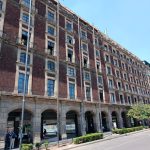 The Portal de los Mercaderes was begun in the 16th century as a series of covered walkways with permanent and semi-permanent shops of exotic and luxury goods. Popular devotion to a Christ of Patience resulted in the "Santo Ecce Homo del Portal" (The Ecce Homo of the Portal) credited with local miracles.
The portal bordered on the main square of the Viceregal capital of the Viceroyalty, between today's Avenida Madero and 16 de Septiembre. In 1673, part of it was awarded to the Augustinian brothers for commercial development. It was thus known as the "Portal de Agustinos" (the Augustinian Portal).
The complex has been damaged by earthquakes, floods, military and popular uprisings numerous times over the centuries. By 1895, some parts of the complex were demolished. The portal was then renovated and the square emptied of vendors and wares. Popular commerce survives though with jewelry stores and the hundred-year old Sombrerería Tardan hat store.
The Portal de los Mercaderes was begun in the 16th century as a series of covered walkways with permanent and semi-permanent shops of exotic and luxury goods. Popular devotion to a Christ of Patience resulted in the "Santo Ecce Homo del Portal" (The Ecce Homo of the Portal) credited with local miracles.
The portal bordered on the main square of the Viceregal capital of the Viceroyalty, between today's Avenida Madero and 16 de Septiembre. In 1673, part of it was awarded to the Augustinian brothers for commercial development. It was thus known as the "Portal de Agustinos" (the Augustinian Portal).
The complex has been damaged by earthquakes, floods, military and popular uprisings numerous times over the centuries. By 1895, some parts of the complex were demolished. The portal was then renovated and the square emptied of vendors and wares. Popular commerce survives though with jewelry stores and the hundred-year old Sombrerería Tardan hat store.
Heart of Mexico Walking Tours, Rt 1 - Templo Mayor
< < Gran Hotel de CDMX | Index > >
Proyecto “Corredor de Cultura Digital”.
Nombre de la investigación: Investigación Centro Histórico, Monumentos, Edificios y Puntos de Interés (2023)
Dirección de investigación y diseño de Rutas: Acércate al Centro A.C. Guadalupe Gómez Collada
Coordinación e investigación histórica: Fideicomiso del Centro histórico Dir. Maestra Loredana Montes
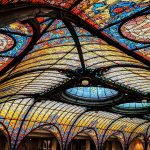
Nearest at 0.06 kms.
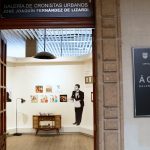
Nearest at 0.07 kms.
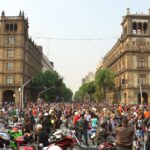
Nearest at 0.07 kms.

A landmark hotel on the edge of Mexico City's main plaza . . .

One of the most important sites in the city, even today, don't miss the chance to visit the Templo Mayor.
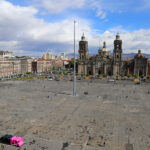
There's no center like the very center, and in Mexico City, that means el Zócalo!
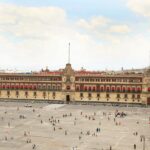
One of Mexico City's proudest, most enormous parts of history, the Palacio dominates the entire east of the Zocalo.

The first Cathedral to have been built in the Americas.